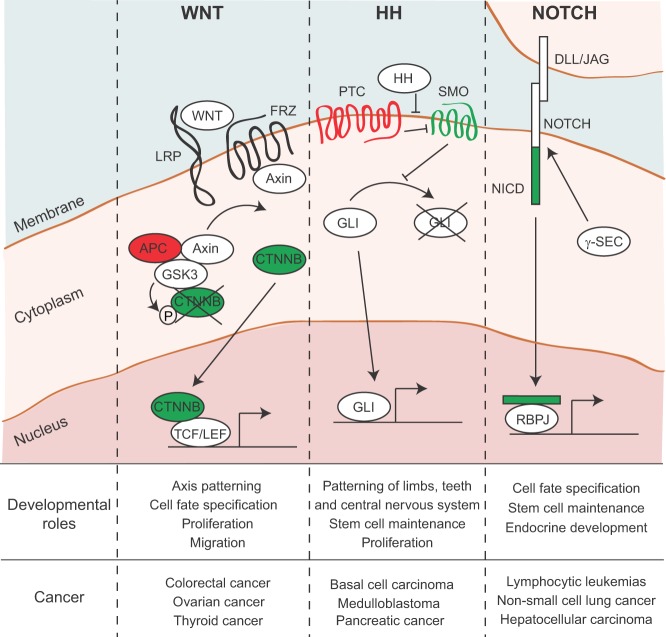Fig. 1.
Developmental pathways are frequently activated in cancer. WNT, HH and NOTCH pathways are involved in many aspects of embryogenesis, including, but not limited to, patterning, cell fate specification, proliferation and stem cell maintenance. Dysregulation of each of these signal transduction pathways has been implicated in tumor initiation. In each case, the pathway is activated upon binding of a ligand to a receptor on the plasma membrane. This sets off a cascade of events allowing an effector to translocate to the nucleus and affect gene transcription. Pathway genes that are typically inactivated in cancer are highlighted in red; genes that are frequently hyperactivated in cancer are shown in green. WNT, wingless-type MMTV integration site; FRZ, Frizzled; LRP, low-density lipoprotein receptor-related protein; APC, adenomatous polyposis coli; GSK3, glycogen synthase kinase-3; CTNNB, β-catenin; P, phosphorylation; TCF, T-cell-specific transcription factor; LEF, lymphoid enhancer binding factor; HH, hedgehog; PTC, patched; SMO, smoothened; GLI, GLI-family zinc finger; DLL, delta-like; JAG, jagged; NICD, notch intracellular domain; γ-sec, γ-secretase; RBPJ, recombination signaling binding protein for kappa J region.

